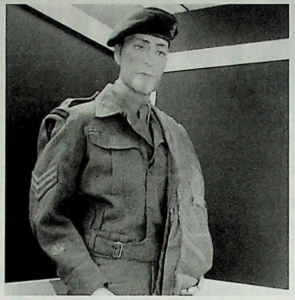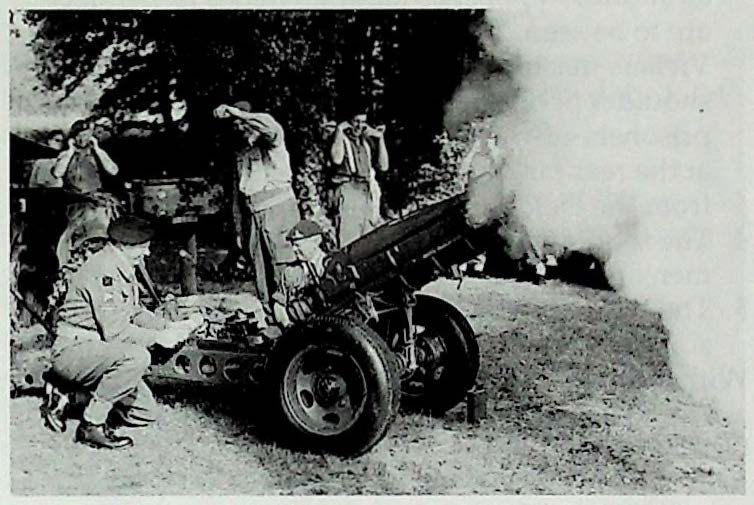FRIENDS OF THE AIRBORNE MUSEUM
Newsletter No. 90, June 2003
Translated by Cathrien and Peter Clark
From the editors
For some time the Friends’ Society has had its own office in the Airborne Museum, and this is now the home of the Newsletter editorship. The office has a computer with e-mail and internet facilities. The equipment was bought in conjunction with the Renkum municipality Local History Foundation, an organisation that researches the municipality’s history in its broadest sense and disseminates the results of its labours. This foundation also uses the office facilities for editing its own quarterly newsletter.
The Newsletter editorship’s e-mail address is vvamredactie@planet.nl
25th anniversary
On 11 May 1978 Major General R.E. Urquhart opened the new Airborne Museum in Huize Hartenstein. The museum had been housed in a section of Doorwerth Castle since 1949 under the auspices of the Local History Foundation. As the years passed the collection grew to such an extent that the available space was insufficient for displaying all the exhibits. The presentation also ceased to meet the requirements of the time. In 1977 it was decided to re-house the museum in the former Hartenstein hotel in Oosterbeek, for which the new Airborne Museum Foundation was created. So, on 11 May 2003, the Airborne Museum ‘Hartenstein’ in its present form celebrated its 25th ‘birthday’.
Berry de Reus began working for the Airborne Museum Foundation in 1978, as did three volunteers, namely Ad van Veggel, administrator, Wim de Ruijter, responsible for all the museum’s photographs, and Els Catersels, cash desk and shop. All still work at the museum.
In the early years Berry carried out the daily running of the museum virtually single-handed, but as time went by the tasks increased so much that delegation of the work became an obvious necessity. Nowadays the museum has a comprehensive staff. Over the last 25 years hundreds of visitors have come to know Berry as the pivotal point of the museum. Many prominent visitors have assisted him in word and deed.
Since the very beginning Wim de Ruijter has taken care of all the photos for the permanent exhibition. In 25 years he has printed more than 2,500 photographs, a thousand for the permanent exhibition and the rest for fourteen theme exhibitions. The above total does not include the photos required for the huge number of publications that have been produced. On top of all this, for many years Wim has been a board member of the Society of Friends of the Airborne Museum.
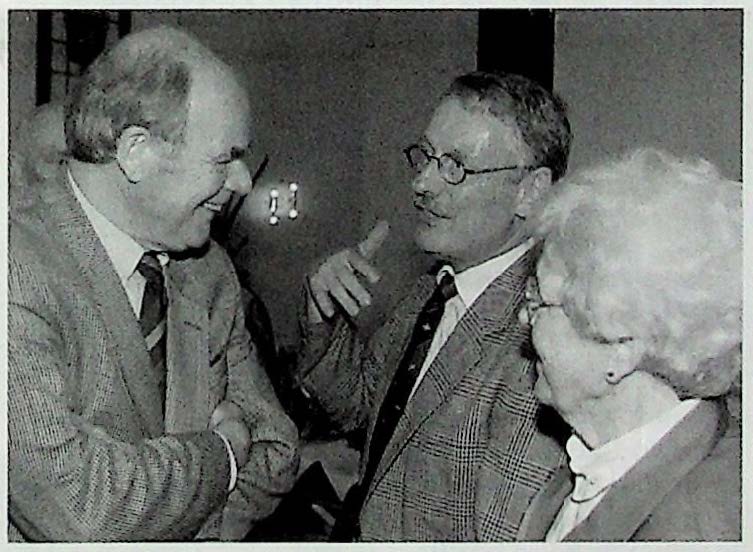 9 May 2003. Berry de Reus and Els Catersels are congratulated by Renkum aiderman Chris van Waveren (on the left) on the occasion of the reception held in the Airborne Museum to celebrate their 25 years work at the museum. (Photo: Robert Voskuil)
9 May 2003. Berry de Reus and Els Catersels are congratulated by Renkum aiderman Chris van Waveren (on the left) on the occasion of the reception held in the Airborne Museum to celebrate their 25 years work at the museum. (Photo: Robert Voskuil)
Since 1978, Ad van Veggel has organised the museum’s financial administration. Originally this was relatively uncomplicated, but over the years it has grown into a complex, computerised bookkeeping system. During the period 1993-1994 he also reorganised the entire administrative arrangements for the renovation of the museum. Els Catersels began at the cash desk as a volunteer. At that time the sale of tickets was still simple. Now there is an advanced cash registering system to
which an extensive shop is linked. Operation of the museum’s various audio-visual systems is also carried out from the cash desk area, as is the manning of the telephone.
A reception was held in the Airborne Museum on 9 May last to honour the four people celebrating their 25th anniversary. Speeches of congratulation were made by, among others, board members Wybo Boersma and Wim Duyts, and aiderman Chris van Waveren. Many people took the opportunity of congratulating the ‘celebrants’ on their 25 years of service to the museum. The Friends’ board was also represented and all four received gifts on behalf of the Society.
(Wybo Boersma)
Farewell to the chairman of the Airborne Museum Foundation
Mr J.W.A.M. Verlinden, chairman of the Airborne Museum Foundation and burgomaster of Renkum, retired on 1 April 2003. The statutes of the foundation allow for a seat on the board for a representative from the Renkum college of burgomaster and aidermen. This was Mr Verlinden, who was also chosen as chairman by the foundation board. The termination of his period as burgomaster also signalled the end of his chairmanship.
He was the face of the museum for almost 17 years. He represented both the municipality and the museum at many official functions including the Airborne Commemorations, with the 50th anniversary in 1994 as highpoint. As chairman he was host to many visitors to the museum, including members of the Dutch and British royal families, ambassadors, military attaches and many others, but, in particular, the veterans. He was ideally suited to hosting such visits.
Many people are unaware of his tremendous efforts behind the scenes on the museum’s behalf. During the fund-raising for the 1.993/1994 renovation, doors were opened to him that would have remained closed to anyone else.
Here and now, we would like to thank the departing chairman for all the work he has done down the years and wish him and his wife a long future together in good health.
Board member Mr J.W. van Slooten was made chairman as of 23 April 2003. Mr P.H. Tirion from Oosterbeek recently succeeded Mr M.D.M. Rutte as treasurer.
(Wybo Boersma)
Opening of exhibition
On Thursday afternoon the 24th of April, the exhibition ‘Vuursteun aan de Airbornes’ (Fire support for the Airborne) was opened by Captain P.W. Wilkinson. During the battle Peter Wilkinson was the Command Post Officer of 3rd Battery, Airlanding Light Regiment, Royal Artillery, and fought near the old church at Oosterbeek-Laag.
The exhibition provides an overview of the deployment of the Royal Artillery during the Battle of Arnhem. In this, the role of the Airlanding Light Regiment R.A., the 1st and 2nd Airlanding Anti-Tank Batteries and the artillery support from the Betuwe by units of 30 Corps are highlighted. The part played by anti-tank units of the Airlanding battalions is also covered as far as possible.
In the compilation of the exhibition particular use was made of the various books about the artillery that have been published over the years. Unfortunately there is still a considerable lack of information on the use of, in particular, 17- pounder and 6-pounder anti-tank guns. However, the compilers have tried to be as complete as possible. Of the photos on show – more than 80 – there is also a number of lesser-known images to be seen.
Once again, several members of the Friends’ Society lent the museum items from their personal collections for the exhibition.
A ‘star’ of the show is the new ‘Polsten gun’, purchased by the museum with financial help from the Friends. Alas, it was not possible to get the gun over from England in time for the opening but it is now set up on the first floor in the room next to the Rijnbrug model. The Reconnaissance Squadron had two of these pieces at their disposal during the battle although it is not certain if they were actually used. A detailed article on this type of gun will appear in the next Newsletter.
The exhibition will run until 4 November 2003.
Excursion to Hamminkeln on 4 October 2003
On Saturday 4 October next, the Friends’ Society is organising an excursion to the area around Hamminkeln in Germany where the last great airborne operation of World War II took place on 24 March 1945. We made our first battlefield tour to this region in May 1995, a region where units including the 6th British Airborne Division were involved in such heavy fighting. We are repeating this trip in response to the many requests.
Programme details and costs will appear in the next issue of the Newsletter.
In Memoriam:
Herman Alexander Roell
Lex Roell passed away peacefully in his sleep at his home in Waalre on 22 November 2002, one week before his 77th birthday.
Over the last few years he had become more and more physically affected by his illness. At times he found this extremely difficult, because there were still so many facets of ‘Arnhem’ that he wished to investigate further.
In his younger days he lived at ‘Bornshoeve’ in Schaarsbergen where, after the airborne landings in September 1944, he was confronted with the horrors of war. Among other things, he and his brothers ensured that the bodies of the airmen and air despatches who lost their lives in the surrounding area were given a decent burial. He was never able to erase completely from his mind his wartime experiences. After a career in Italy he moved to Waalre in the Netherlands, and then went about renewing his many contacts in Arnhem and Oosterbeek. I got to know him through Henk Tiemens from Arnhem, and the three of us spent countless hours on the reconstruction of aircraft crashes, the locating of field graves of the dead, etc. Lex, with passion and unrestrained energy, initially carried out much field work in the province of Noord-Brabant, looking for evidence of identification of the fallen who up till then had remained unknown or of whom information was, to say the least, vague. This later resulted in positive identifications of a number of airmen whose names were recorded in the last Roll of Honour. Lex carried out a thorough study of the Royal Air Force’s air movements during operation Market Garden and the task of air re¬supply that was allotted to the men of the Royal Army Service Corps (RASC), the so-called air despatches. He was therefore closely involved in the raising of the monument for the servicemen who lost their lives during the operation, as well as in the identification of a number of RASC soldiers.
For all this highly appreciated work he was made an Honorary Member of the Arnhem 1944 Veterans Club and the Air Despatch Association. His inspiring personality and friendship will be sorely missed by us all.
(Jan Hey)
New Roll of Honour
In 1999 our society published the fourth, revised edition of the Roll of Honour of the Battle of Arnhem, compiled by Jan Hey. There are still a few copies of this honour list of (allied) fallen for sale, so the true collectors or enthusiasts will need to be quick off the mark. The Friends’ board has decided that a start can be made on the preparations for a fifth edition, and to this end additions and corrections have already been gathered.
Any of our readers who may be able to contribute relevant details to the new edition of the Roll are kindly requested to make the information known. This could be the pointing out of errors found in the fourth edition or, for example, the provision of extra details about the place where, and the circumstances under which, a soldier was killed. Geert Maassen (Jan van Riebeeckweg 39, 6861 BD Oosterbeek; e-mail wnmrprlarfip@planet.nl) is looking forward with interest to receiving any such information.
‘B Company arrived’
The book ‘B Company arrived’, written by society member David van Buggenum, was published on 26 April 2003. David, the son of Dutch parents, was born in Perth, West Australia in 1963, and has lived in Arnhem since 1970. His parents lived in Arnhem throughout the war years and were able to tell from first-hand experience what took place around the Gelderland capital during and after September 1944. When, at the age of 16, David began to show interest in the local history of the 1940-1945 period, he concentrated his attention on a relatively small group of just over 100 parachutists. They were the men of B Company, 2nd Parachute Battalion, who had fought at the Rijnbrug and other places during the Battle of Arnhem in September 1944. Through one of them, Sid Fisher, he would meet, interview and write about many of the B Company veterans over the following years. He also obtained information from Dutch civilians who were involved in the events surrounding B Company, and gathered German accounts that highlighted ‘the enemy’ aspect. Interested principally in the personal experiences, David van Buggenum wrote the book ‘B Company arrived’, which is lavishly illustrated with photographs, maps and documents.
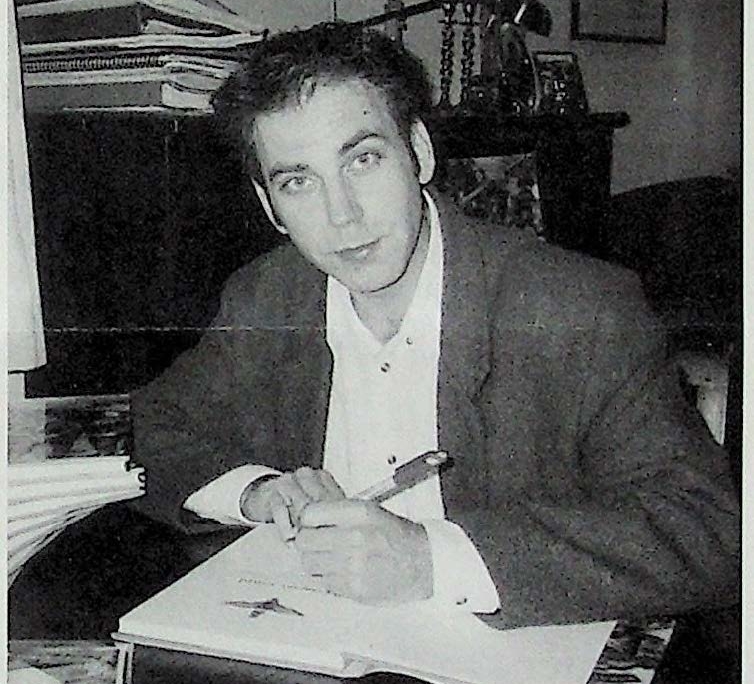 David van Buggenum signs copies of his book ‘B Company arrived’ during its presentation.
David van Buggenum signs copies of his book ‘B Company arrived’ during its presentation.
(Photo: Renkum, 26 April 2003; Bob Gerritsen)
The Book
There is still much to be told about the Battle of Arnhem, and this book relating the experiences of B Company, 2nd Battalion, the Parachute Regiment, – ‘B Company arrived’ – bears this out. It is in English and is written by David G. van Buggenum, a Friend of the Airborne Museum. How the advance to and the battle at the Arnhem road bridge progressed can be found in the books by such people as Urquhart, Frost, Hibbert, Mackay, McKee, Sims, Powell, Kershaw, Peatling, Ryan and Middlebrook, plus a few Dutch authors. However, B Company hardly gets a mention in any of these books in spite of the fact that it accounted for some 13% of the British force at the bridge. This book sets the record straight and tells the whole story!
B Company served as battalion reserve during the advance and had the task of capturing and holding the pontoon bridge. We follow B Company – consisting of Company Headquarters, 4th, 5th and 6th Platoons – from its departure from England on 17 September to its arrival on the dropping zone at Heelsum, followed by its progress to the bridge via ‘Lion route’, the advance route taken by the 2nd Battalion. We witness the skirmishes at Oosterbeek-Laag station, the hold-up at the pontoon bridge, and the fighting at Roermondsplein, in the centre of Arnhem, and around the bridge. We live through the concealment, evacuation, hospitalisation and captivity as POWs of a number of the men. David van Buggenum carries us along via the personal accounts of the parachutists, their German opponents and Dutch civilians, and he portrays the battle, with all its emotions, very ably. By intermingling the stories from the various aspects he provides an excellent insight into the course of the battle seen from the viewpoints of friend and foe alike. We are also introduced to the well-known photographer Sem Presser. The excellent research, analyses and overviews excite admiration. David has written a tense history with great human depth. Wonderful examples of this are Lieutenant Levien’s diary and the stories from Private Izzard and the Dutchman who acted as guide to the company, Jan- Louis Locht.
As is customary, the book is beautifully produced by R.N. Sigmond Publishing, contains many illustrations and good maps, and reads very smoothly. ‘B Company arrived’ comprises 160 pages and costs € 24,50. It is available at the Airborne Museum, in bookshops in Oosterbeek and at the Gelders Archive in Arnhem.
UK members can contact our representative Niall Cherry, 3 Church Road, Warton, Lancs PR4 1BD; 01772 632764; e-mail Niall.Cherry@bae.co.uk (Okko Luursema)
Monument to the RAF
We have received the following request from the ‘Arnhem Battle Research Group’.
‘In the course of the exhibition about the Royal Air Force re-supply missions during the Battle of Arnhem that was held in September last year in Oosterbeek town hall, visitors were asked to give their opinion on the possibility of a monument/ memorial stone to the crew members who were involved in these missions. At the moment there is no such monument. 99% of the people who signed the visitors’ book reacted positively to this suggestion, with most adding that a monument should have been erected years ago. Former RAF aircrew or their relatives sometimes ask us where flowers can be placed in memory of the efforts of the British air force at Arnhem. These people have to be referred to the Airborne Monument opposite ‘Hartenstein’ or to the Air Despatch monument near the Airborne Cemetery. There is no special monument to the RAF, while in fact their role was vitally important.
During the Battle of Arnhem a Stirling crashed in Doorwerth at the spot where the Rehoboth School now stands. Last September we placed two posters in the building giving information and showing photos of the aircraft involved. The children can now read what occurred on the site of their school so many years ago. It was during talks with the head teacher that the idea was born of raising a memorial at this spot as a mark of honour to the Royal Air Force. The school board approved the plan, advising that it should be a simple stone pillar of the type to be found at various locations in Arnhem and Oosterbeek.
In the meantime we have approached various organisations, including the Arnhem 1944 Veterans Club, and everyone is very enthusiastic. The plan will now be worked out in detail. Help in any shape or form is welcome. If you would care to assist in this project please contact Philip Reinders, Margrietstraat 4, 6991 XH Rheden.’ (Philip Reinders)
Editor’s note: The board of the Friends’ Society fully supports this initiative for the raising of a memorial to the RAF and has informed Mr Reinders to this effect.
‘315 Troop Carrier Group’
Recently American Friends’ Society member George F. Cholewczynski established Walka Books, a small press publishing house in New Orleans. George is the author of the book ‘Poles Apart’, which appeared in the Dutch language as ‘De Polen van Driel’ in 1990. Walka has recently published the book ‘Airborne Troop Carrier Three-One-Five Group’, by William L. Brinson. This troop transport group of the United States Army Air Force was founded in February 1942, and left for England in November of the same year. The book tells of the period in which the aircraft operated from various British bases and the operations they took part in, such as Sicily, D-Day, Arnhem and the Rhine Crossing. On 18 September 1944 the group’s task included the dropping of the 4th Parachute Brigade on Ginkel Heath; three days later they dropped the Polish Para Brigade near Driel.
Besides general reports the book contains many interesting personal accounts. The book is well worth reading, contains maps and photos (the majority unknown), and is published by Walka Books, P.O. Box 56307, New Orleans LA 70156, USA, Walka44@msn.com The book is on sale in the Airborne Museum ‘Hartenstein’, € 27,50.
Volunteers needed
The Airborne Museum is looking for volunteers who are occasionally prepared to man the museum’s sales stand at events such as Defence Open Days, commemorations, walks etc. The next event is the Airborne Walk on 6 September next. If you are prepared to help and are available on that day, or others, please contact W. Boersma or B. de Reus at the Airborne Museum (026 3337710).
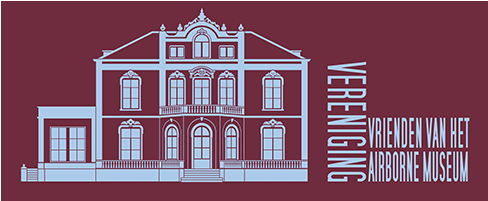
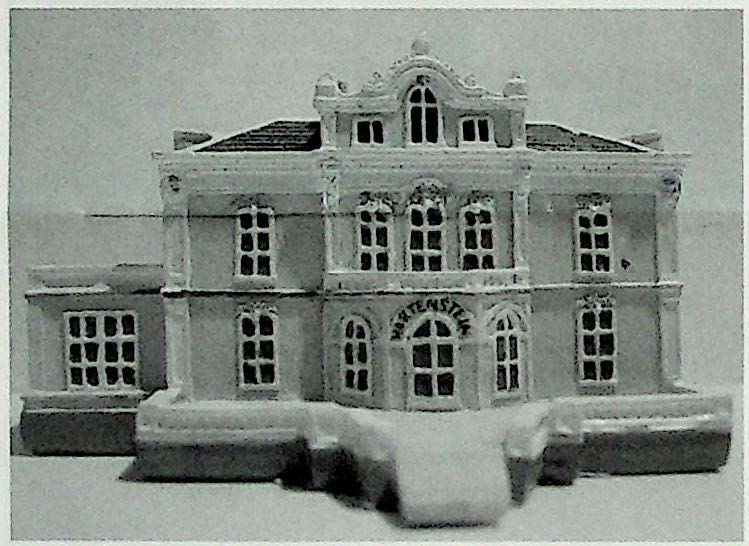 (photo Berry de Reus)
(photo Berry de Reus)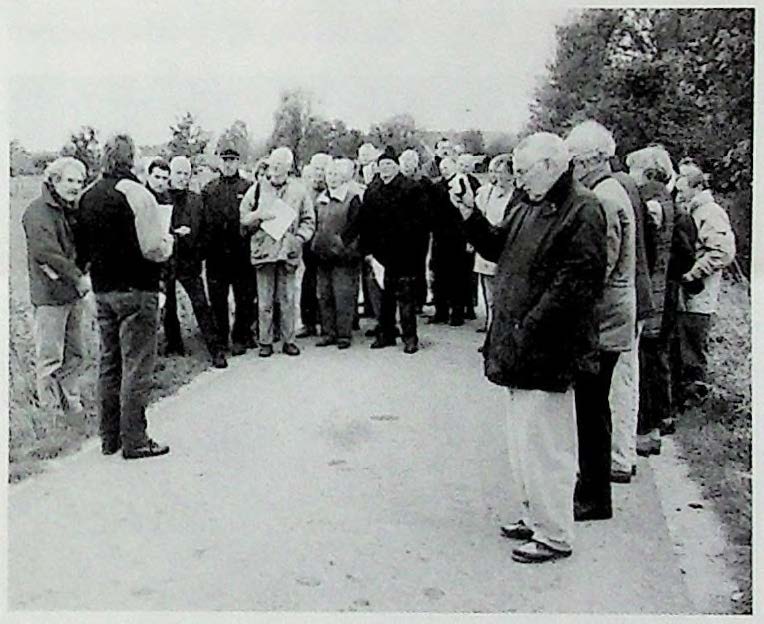 (photo W. Boersma)
(photo W. Boersma)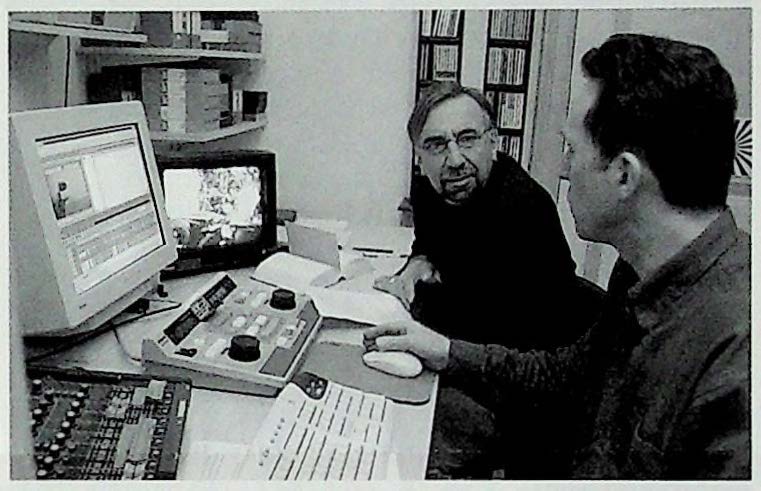 Arend Langenberg and Joop Bal discuss the text for the Airborne Museum’s new audio-visual presentation, (photo Berry de Reus)
Arend Langenberg and Joop Bal discuss the text for the Airborne Museum’s new audio-visual presentation, (photo Berry de Reus)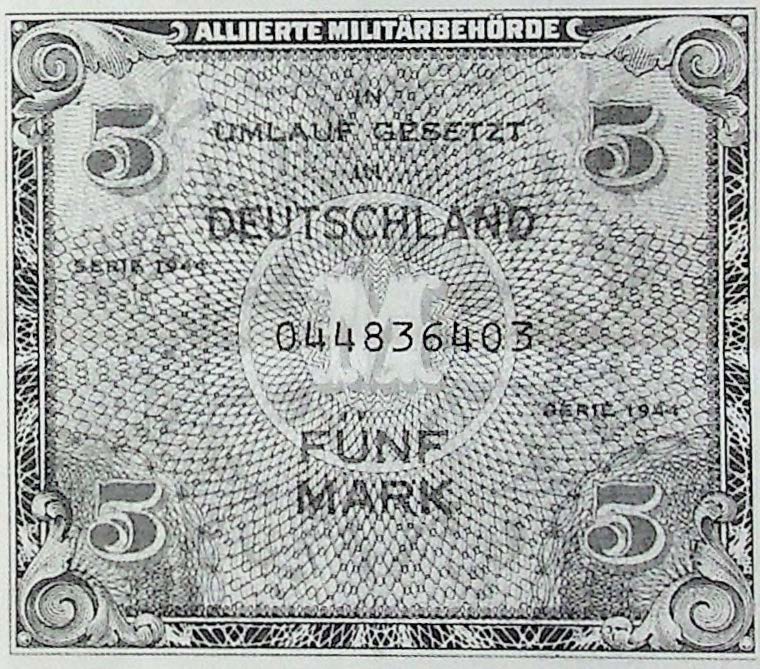 (Castendijk collection, Gelders Archief – Arnhem)
(Castendijk collection, Gelders Archief – Arnhem)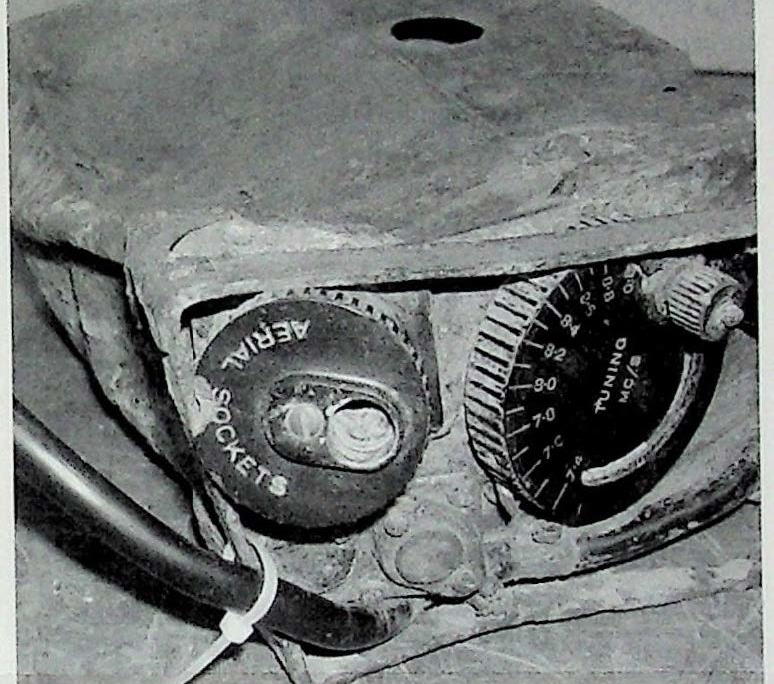 (photo Roland Bockhorst)
(photo Roland Bockhorst)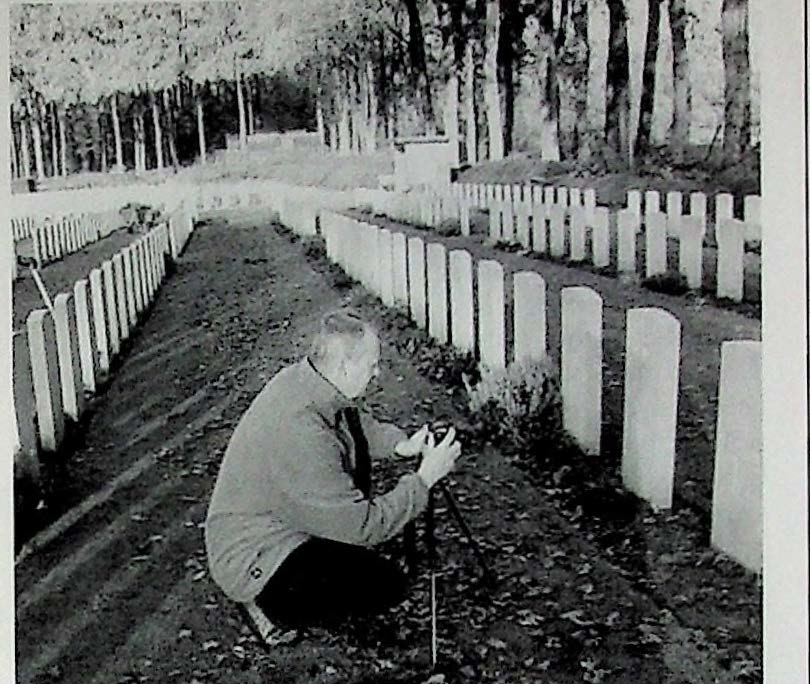
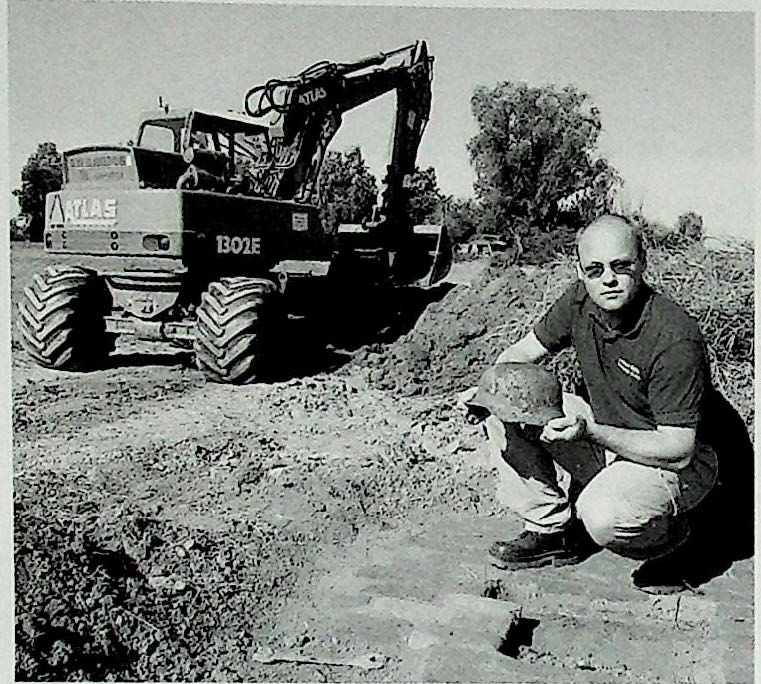 (photo Berry de Reus)
(photo Berry de Reus)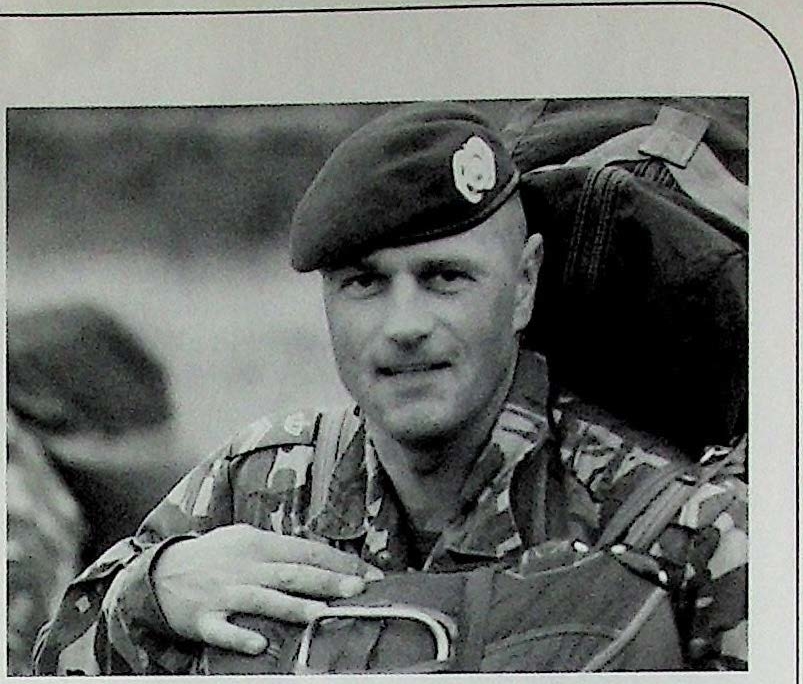 On Saturday 21 September last year, the honour -as a soldier serving with the Air Mobile Brigade – of taking part in the parachute drop at Ginkel Heath fell to our member Peter Steenhuis.
On Saturday 21 September last year, the honour -as a soldier serving with the Air Mobile Brigade – of taking part in the parachute drop at Ginkel Heath fell to our member Peter Steenhuis.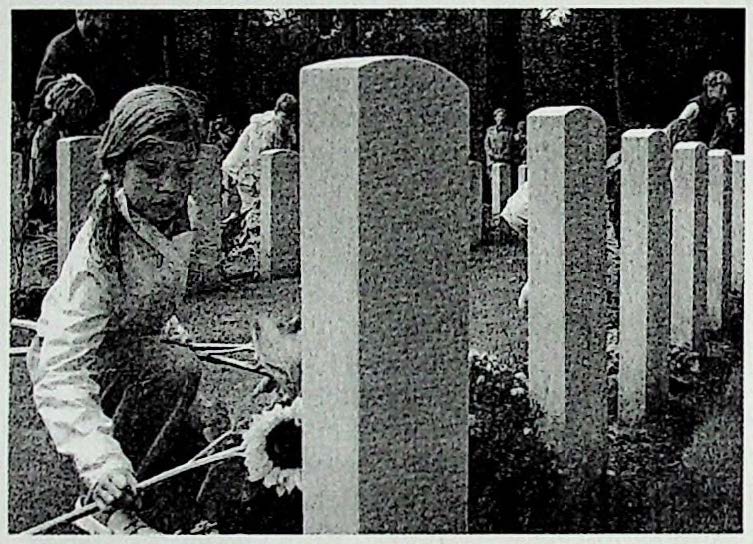 Airborne Cemetery Oosterbeek, 22 September 2002.
Airborne Cemetery Oosterbeek, 22 September 2002.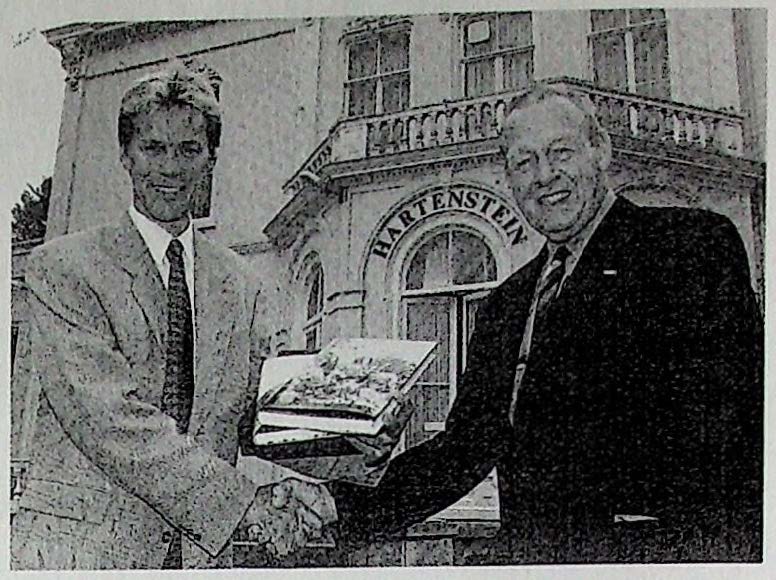 (photo: Berry de Reus)
(photo: Berry de Reus)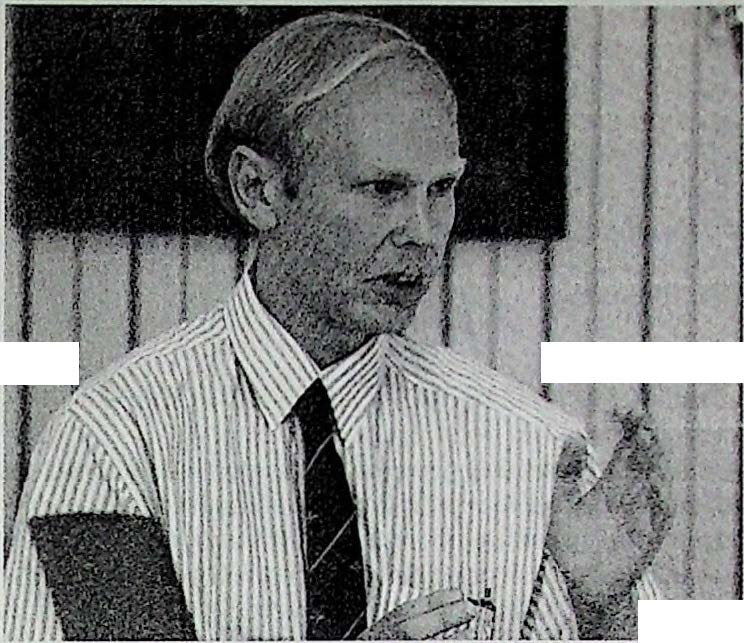 (photo: Berry de Reus)
(photo: Berry de Reus)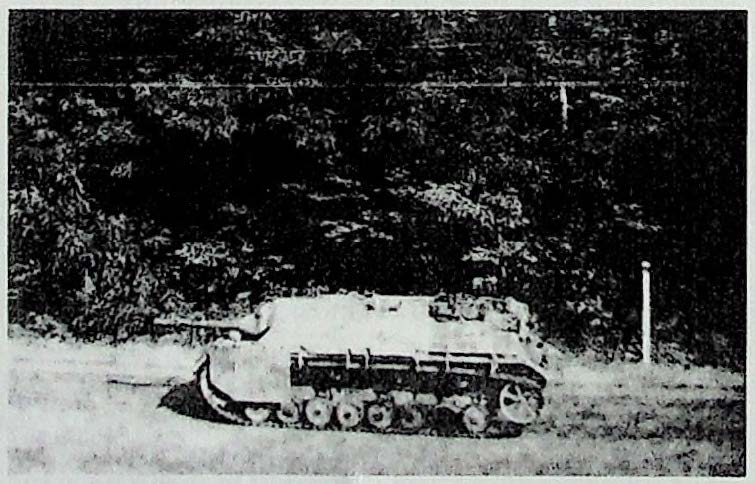 A Jagdpanzer IV on Utrechtsezveg in Arnhem, at the junction with Rosandelaan, driving in the direction of Oosterbeek, 18 September 1944.
A Jagdpanzer IV on Utrechtsezveg in Arnhem, at the junction with Rosandelaan, driving in the direction of Oosterbeek, 18 September 1944.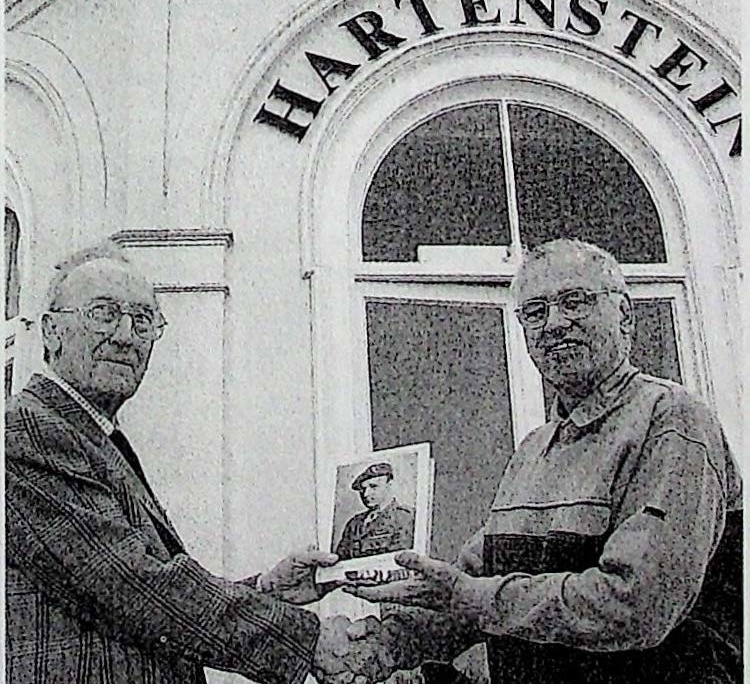 (photo: Berry de Reus)
(photo: Berry de Reus)
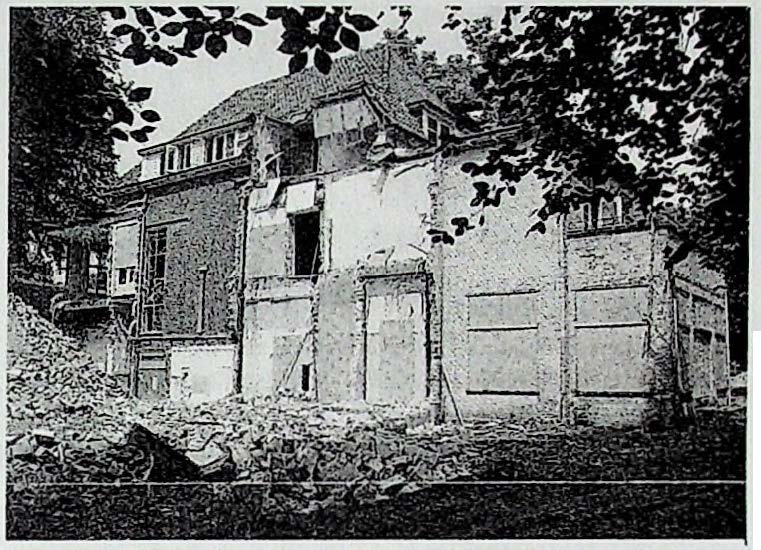 5 June 2002. Demolition crews have been busy knocking down Huize Tafelberg. Only the front part will remain, having been given monument status.
5 June 2002. Demolition crews have been busy knocking down Huize Tafelberg. Only the front part will remain, having been given monument status.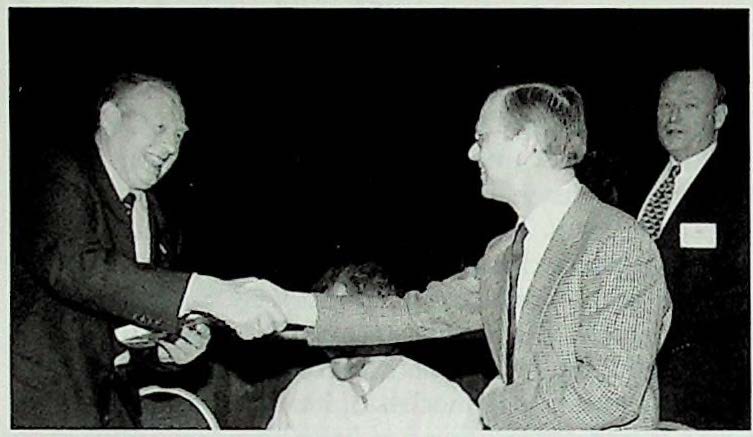 (photo G.J. Koster)
(photo G.J. Koster)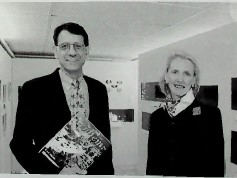 (photo: Berry de Reus)
(photo: Berry de Reus)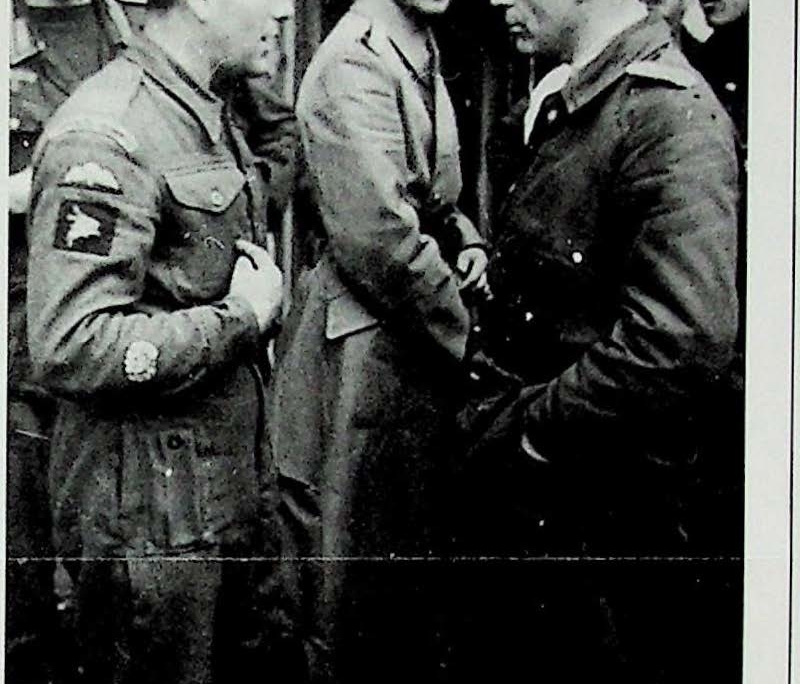 (photo: R. Voskuil collection)
(photo: R. Voskuil collection)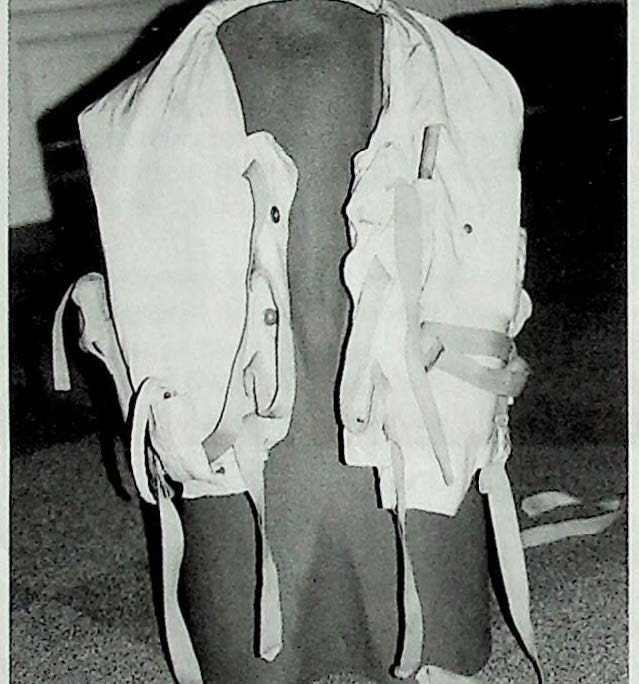 The ‘Mae West’ life jacket worn by Flight Engineer T. Haig during re-supply flights over Oosterbeek. (photo: Roland Bockhorst)
The ‘Mae West’ life jacket worn by Flight Engineer T. Haig during re-supply flights over Oosterbeek. (photo: Roland Bockhorst)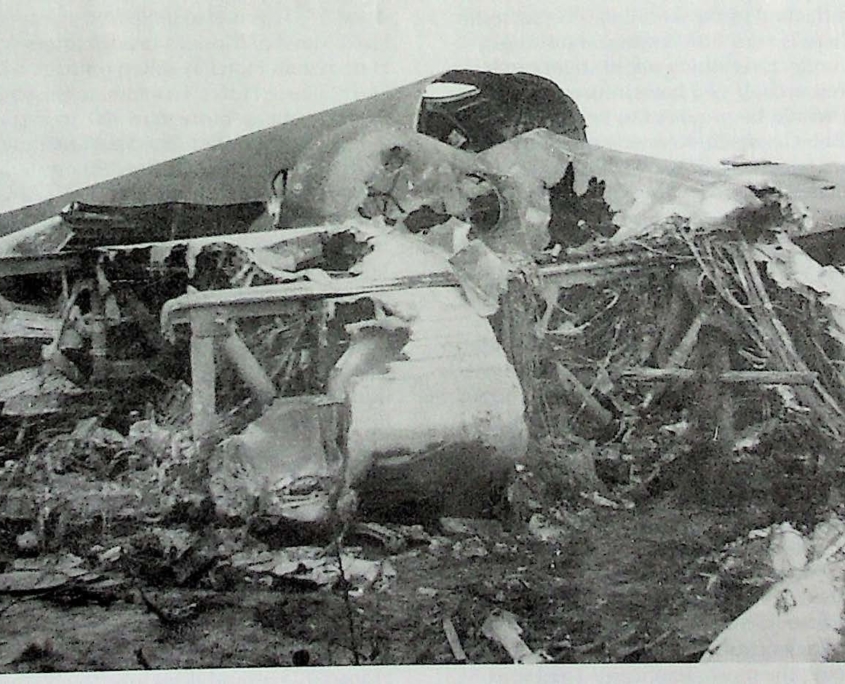
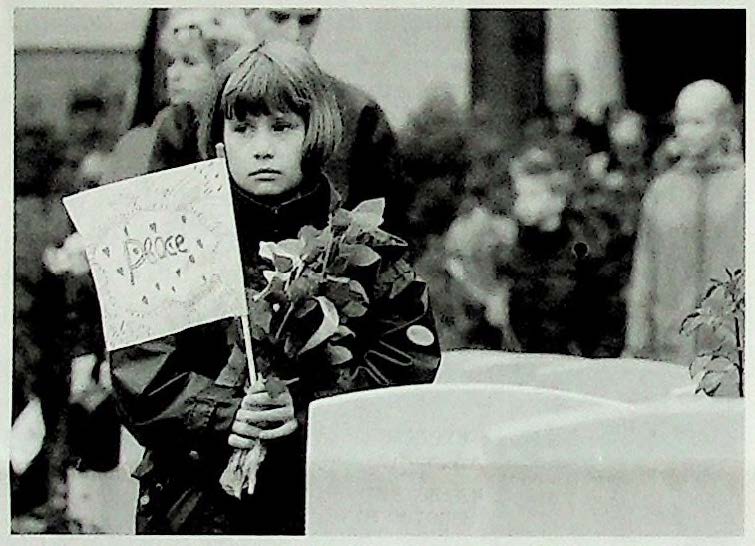 (Photo: Berry de Reus)
(Photo: Berry de Reus)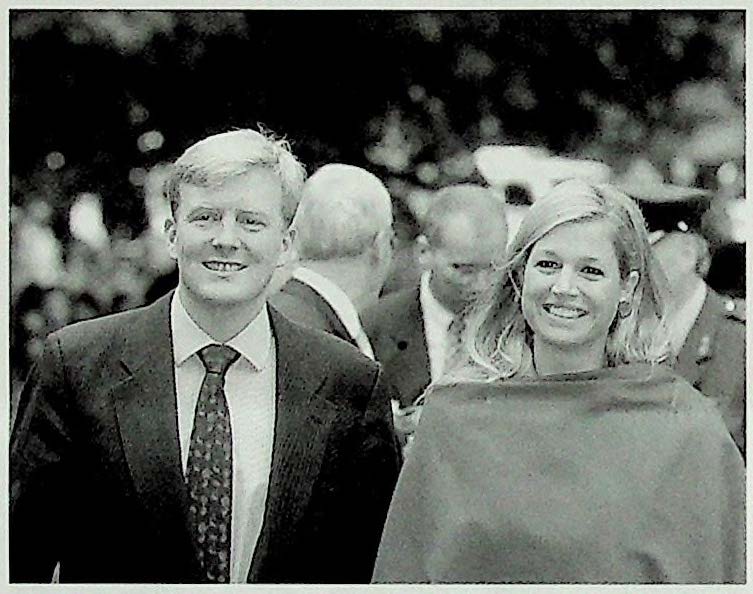 Wednesday 19 September 2001. Willem-Alexander and Maxima arrive al Hie Airborne Museum.
Wednesday 19 September 2001. Willem-Alexander and Maxima arrive al Hie Airborne Museum.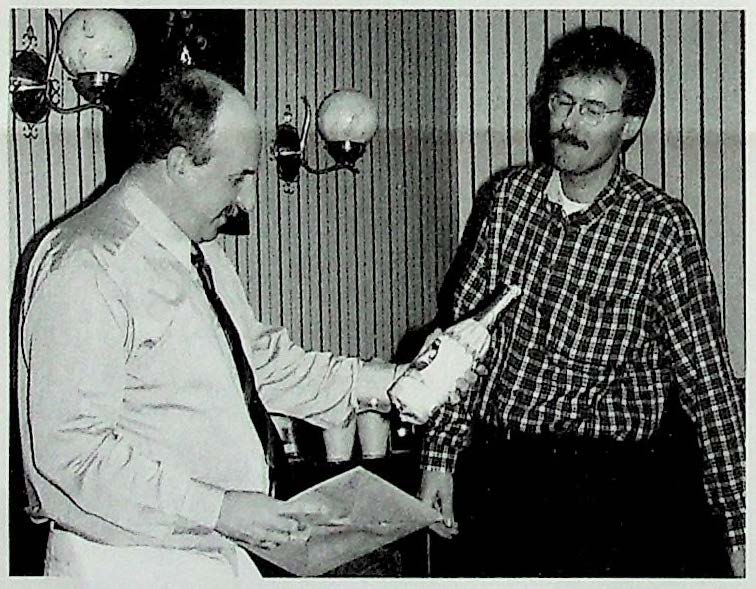 (Photo: Wybo Boersma)
(Photo: Wybo Boersma)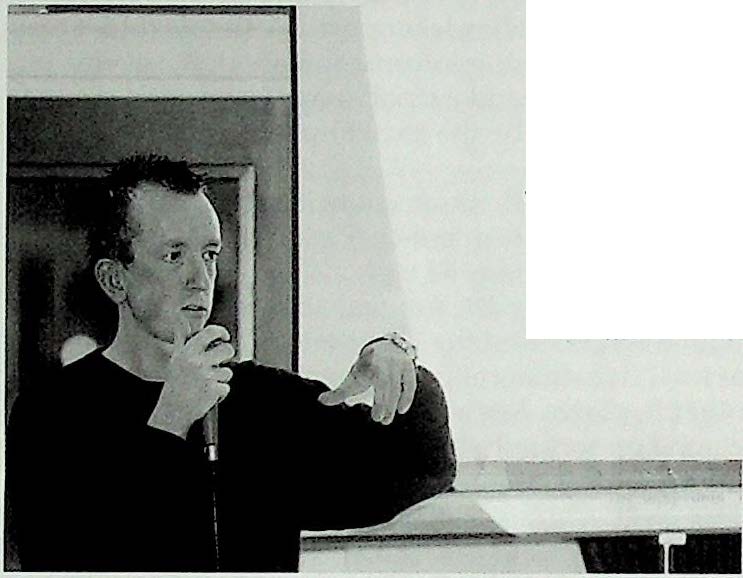 On 3 November Patrick Pronk gave a lecture on the 9lh (Airborne) Field Company Royal Engineers in ‘Overdal’ care home, Oosterbeek.
On 3 November Patrick Pronk gave a lecture on the 9lh (Airborne) Field Company Royal Engineers in ‘Overdal’ care home, Oosterbeek.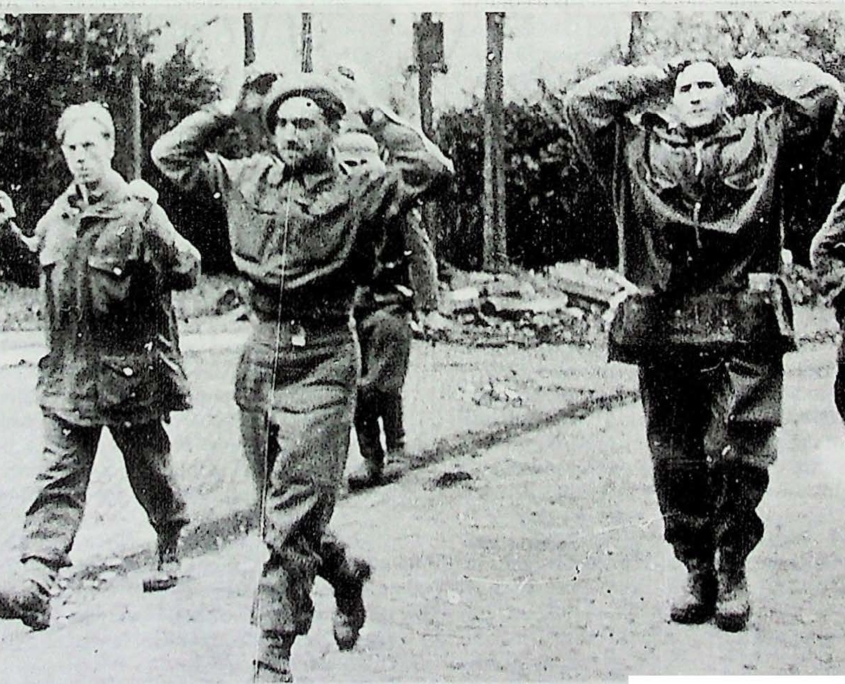

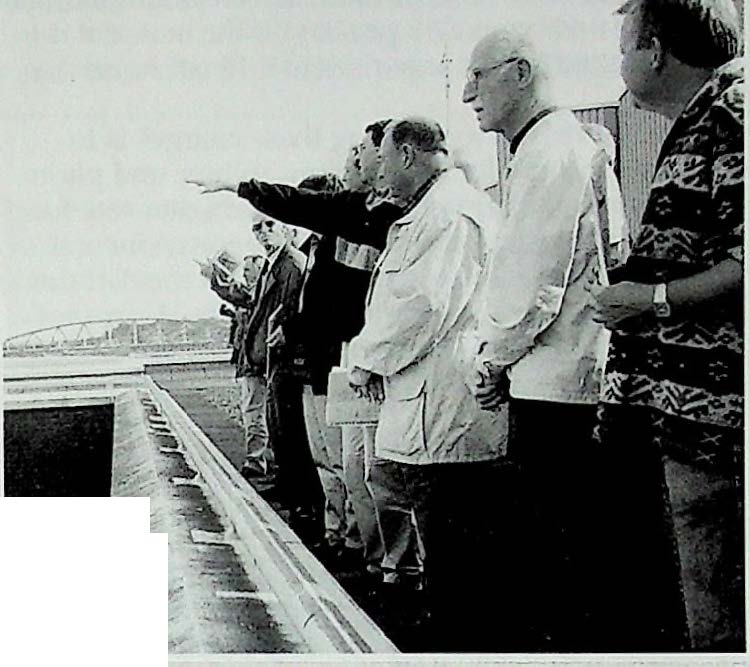 Nijmegen Excursion, 6 October 2001. From the roof of the NLION building Marcel Anker points out the spot where the 3rd Battalion of the American 504 Parachute Infantry Regiment crossed the Waal on 20 September 1944.
Nijmegen Excursion, 6 October 2001. From the roof of the NLION building Marcel Anker points out the spot where the 3rd Battalion of the American 504 Parachute Infantry Regiment crossed the Waal on 20 September 1944.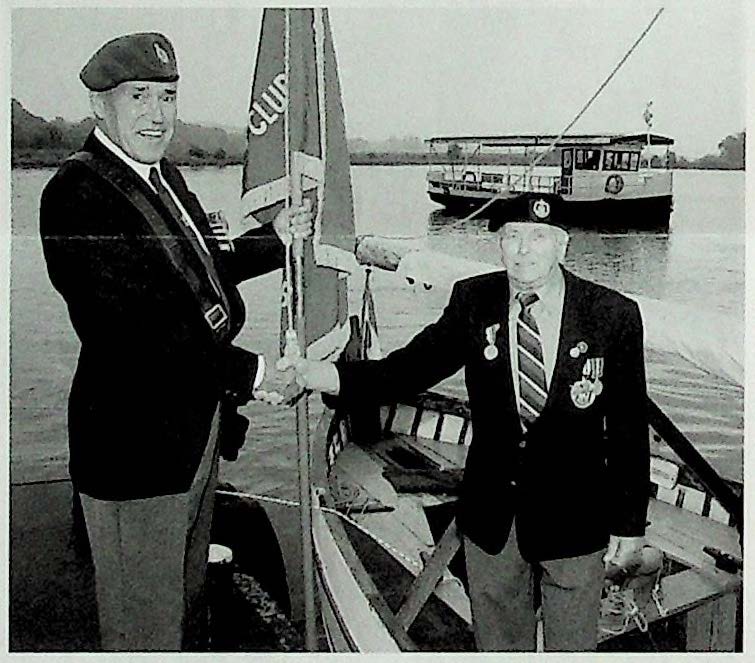 (Photo: Berry de Reus)
(Photo: Berry de Reus)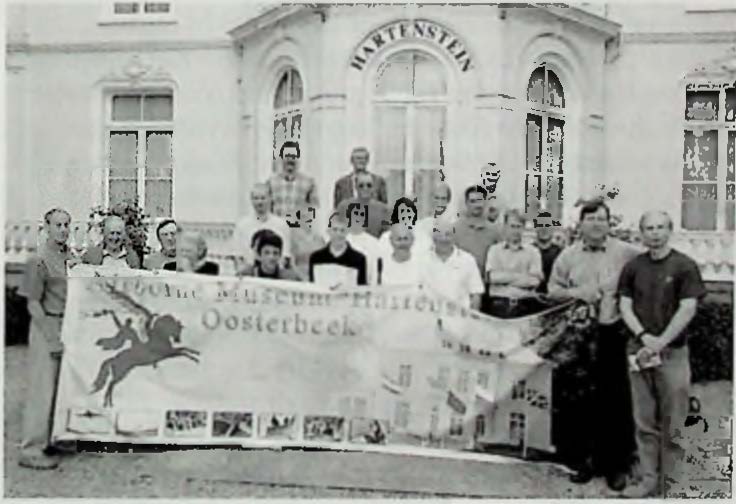 Participants in the ‘British Weekend’ of 22 to 24 lune 2001 pose in front of the Airborne Museum.
Participants in the ‘British Weekend’ of 22 to 24 lune 2001 pose in front of the Airborne Museum.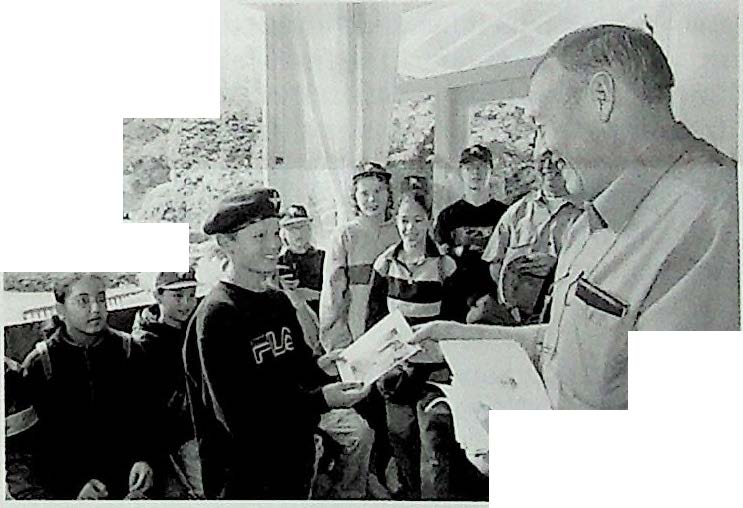 On Hie 22 lune 200’1, the 50,000th student visited the Airborne Museum within the cadre of the Schools Project. He received a number of presents from the hands of Society Chairman Chris van Roekel as reminders of this day.
On Hie 22 lune 200’1, the 50,000th student visited the Airborne Museum within the cadre of the Schools Project. He received a number of presents from the hands of Society Chairman Chris van Roekel as reminders of this day. Frost’s recently returned engraved hunting-horn.
Frost’s recently returned engraved hunting-horn.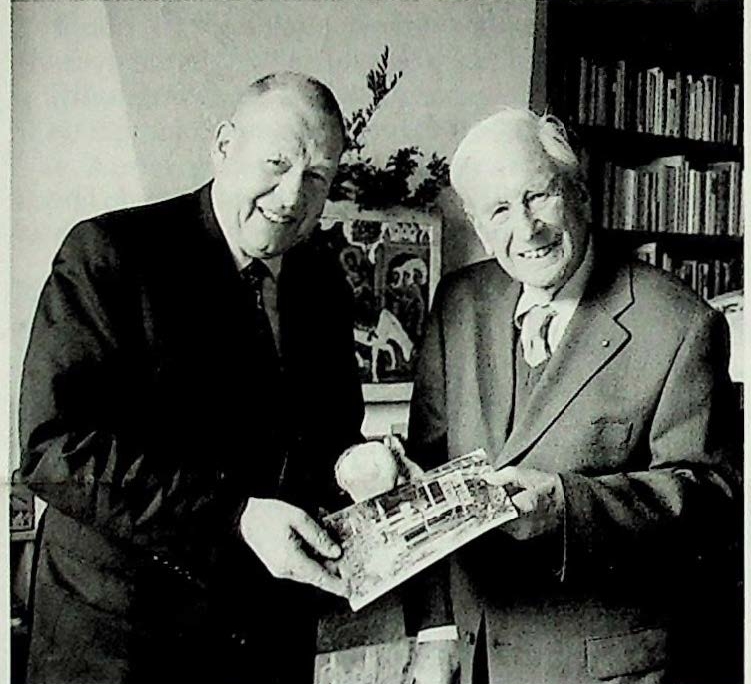 23 April 2001. Author Chris van Roekel hands the first copy of the book ‘The Torn Horizon’ to Mr Jan ter Horst, (photo: Ben Kolster)
23 April 2001. Author Chris van Roekel hands the first copy of the book ‘The Torn Horizon’ to Mr Jan ter Horst, (photo: Ben Kolster) The author of the book ‘Airborne Engineers, The Shiny 9fh‘ Patrick Pronk and veteran Mr E.C. O’Callaghan study the exhibited photos during the opening of the Royal Engineers exhibition on 23 April last, (photo: Berry de Reus)
The author of the book ‘Airborne Engineers, The Shiny 9fh‘ Patrick Pronk and veteran Mr E.C. O’Callaghan study the exhibited photos during the opening of the Royal Engineers exhibition on 23 April last, (photo: Berry de Reus)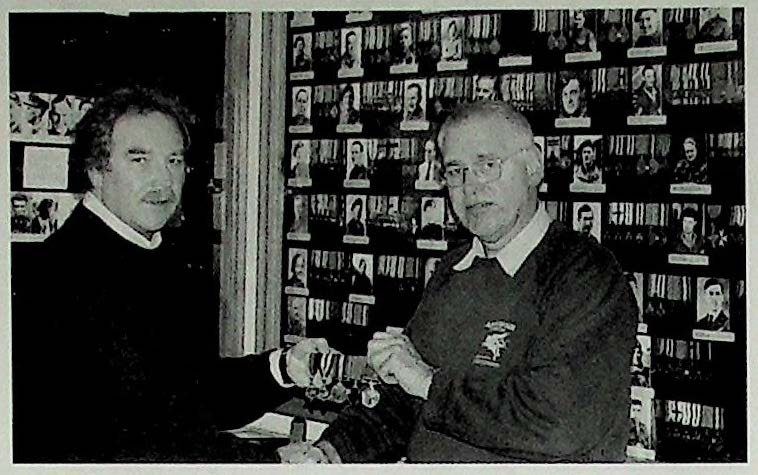 Director of the Airborne Museum Wybo Boersma receives ex-Air Despatcher Ron Clancy’s medals from the hands of Cees van den Bosch. Ron Clancy passed away in October last year.
Director of the Airborne Museum Wybo Boersma receives ex-Air Despatcher Ron Clancy’s medals from the hands of Cees van den Bosch. Ron Clancy passed away in October last year.